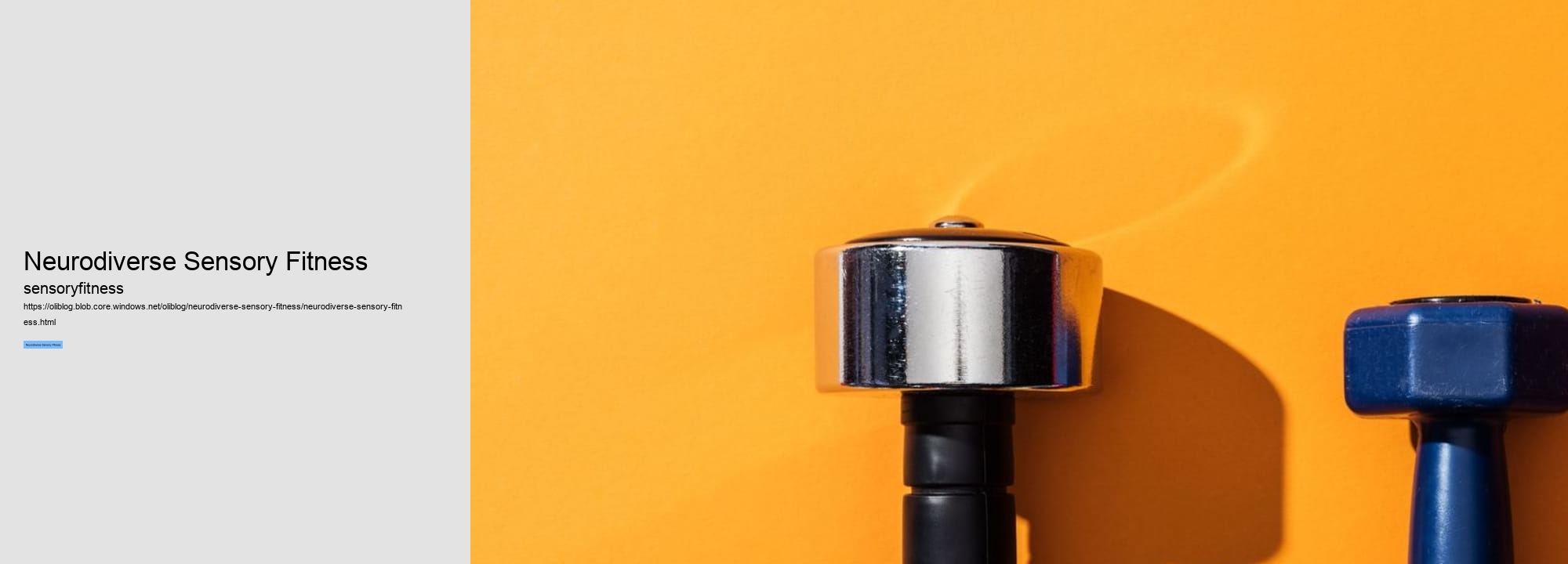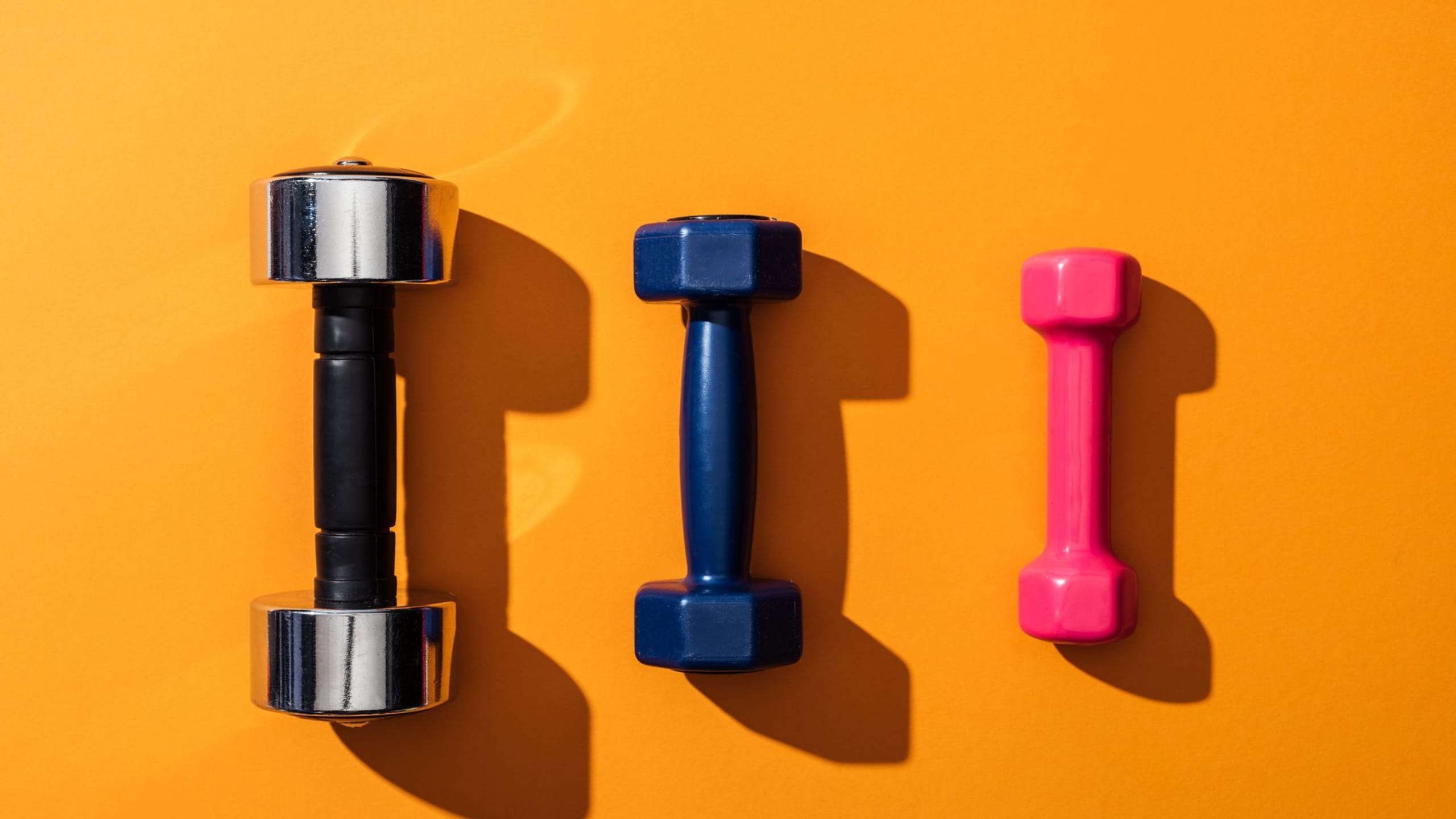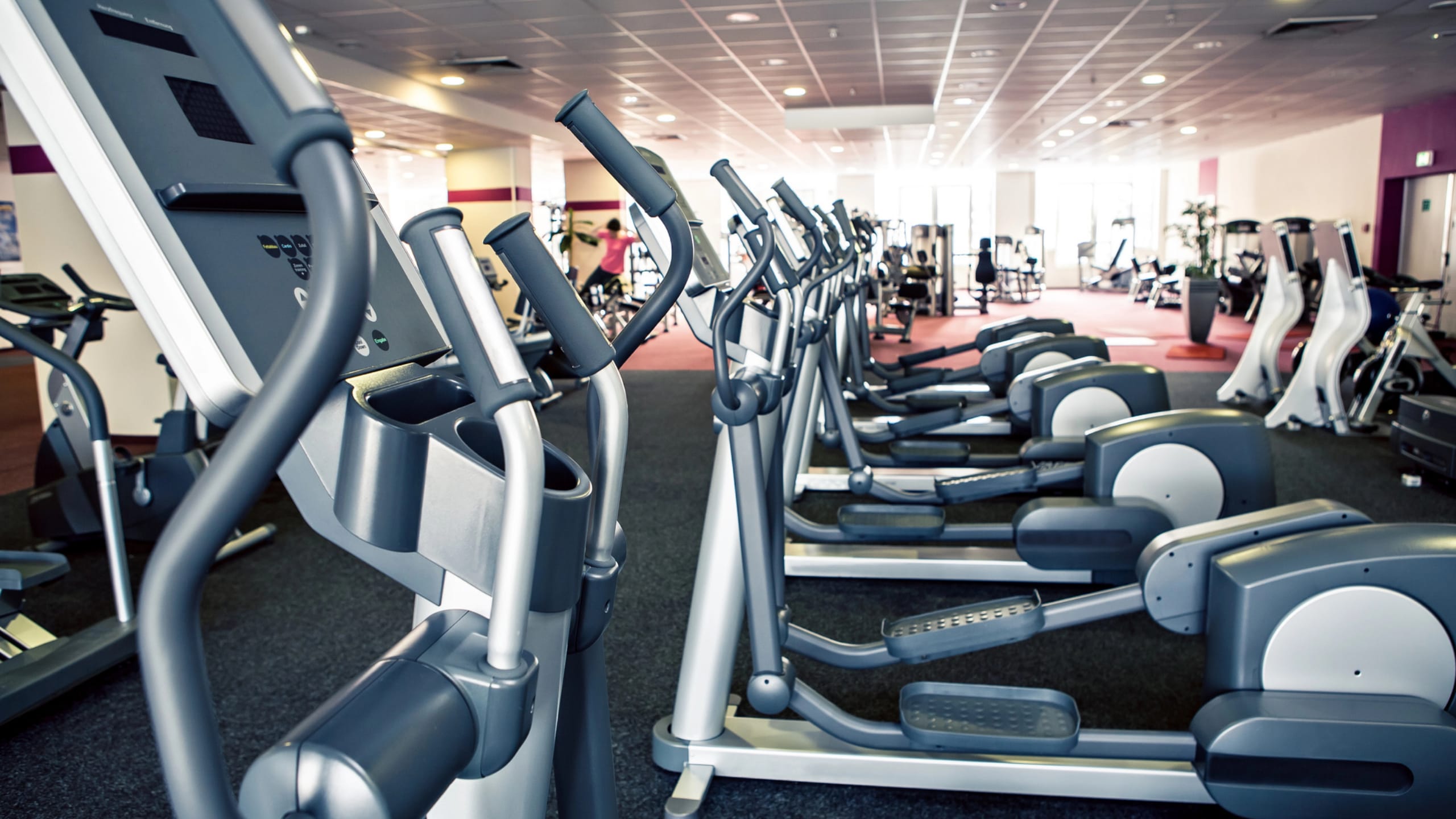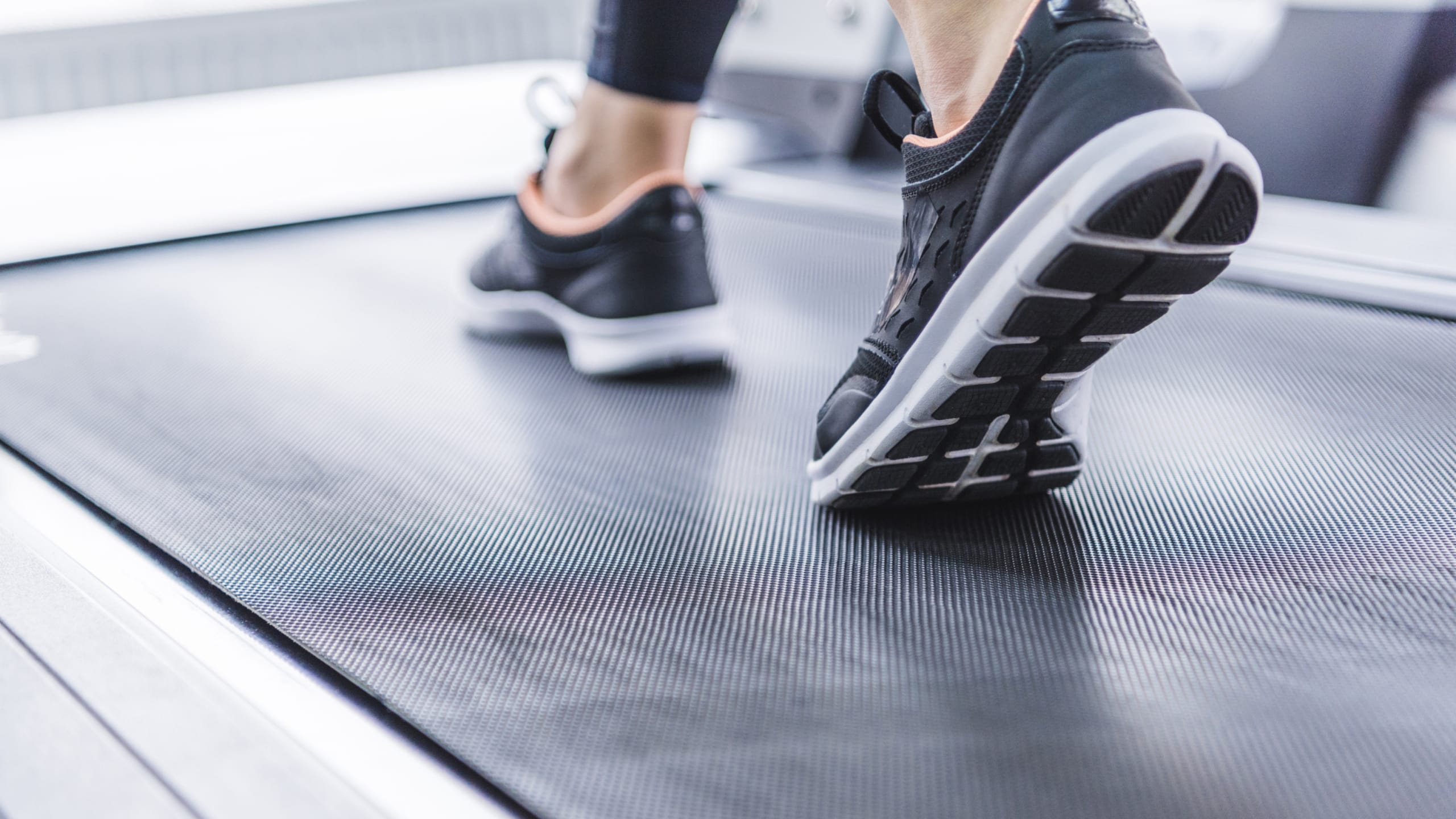

By improving focus, attention, processing speed, coordination, self-regulation skills, and emotional resilience through targeted sensory activities, individuals can enhance their overall quality of life and achieve greater success in both academic and personal endeavors. How to create a sensory-friendly fitness routine for neurodiverse individualsCreating a sensory-friendly fitness routine for neurodiverse individuals requires a thoughtful and inclusive approach that takes into consideration their unique needs and preferences. By understanding the specific sensory sensitivities and challenges faced by individuals with conditions such as autism, ADHD, or sensory processing disorder, we can tailor our fitness routines to provide a positive and supportive environment for everyone to thrive. One important aspect to consider when designing a sensory-friendly fitness routine is the environment in which the activities take place. This may involve selecting a quiet and calm space free from excessive noise or distractions, providing ample natural light, and ensuring that the temperature is comfortable for all participants.
When it comes to choosing exercises for neurodiverse individuals, it is essential to focus on activities that are engaging, varied, and adaptable to different skill levels. For example, incorporating activities that involve rhythmic movements or deep pressure input can help individuals regulate their sensory systems and feel more grounded during exercise. Additionally, offering options for both individual and group activities can cater to different preferences and comfort levels. Another key consideration when creating a sensory-friendly fitness routine is providing clear instructions and support throughout the session.
It is also important to allow for breaks as needed and respect individual boundaries when it comes to physical contact or personal space. In conclusion, creating a sensory-friendly fitness routine for neurodiverse individuals requires empathy, flexibility, and creativity. By taking the time to understand each individual's unique needs and preferences, we can design an inclusive environment where everyone feels welcome and supported in their journey towards better health and well-being. Through patience, communication, and collaboration with professionals who specialize in working with neurodiverse populations, we can create a safe space where all individuals can thrive physically, mentally, emotionally while enjoying the benefits of regular physical activity.
Sensory activities involve engaging the senses in various ways to promote relaxation, focus, and stimulation during physical activity. One way to incorporate sensory activities into workouts is by utilizing different textures and materials. For example, using textured mats or equipment can provide tactile stimulation while exercising. This can help individuals with sensory processing issues feel more grounded and engaged in their workout.
Another effective strategy is incorporating music or sound into the workout routine. Music has been shown to have a powerful impact on mood and motivation during exercise. Neurodiverse individuals may benefit from choosing music that is calming or energizing based on their individual preferences. Visual stimuli can also play a key role in enhancing sensory experiences during workouts. Incorporating colorful visuals or patterns into the workout space can help individuals stay focused and engaged throughout their exercise routine. In addition to these sensory strategies, mindfulness techniques such as deep breathing exercises or guided imagery can be helpful for promoting relaxation and reducing stress during physical activity.
Overall, incorporating sensory activities into workouts for neurodiverse individuals can enhance the overall exercise experience by providing additional stimulation, relaxation, and focus. By utilizing a variety of sensory strategies such as textures, music, visuals, and mindfulness techniques, individuals can create a more personalized and engaging workout routine that meets their unique needs. How to tailor fitness programs to accommodate different sensory needs in neurodiverse individualsWhen it comes to creating fitness programs for neurodiverse individuals, it is important to consider their unique sensory needs. Neurodiversity encompasses a range of conditions such as autism, ADHD, and sensory processing disorder, which can impact how a person experiences the world around them. By tailoring fitness programs to accommodate these sensory needs, we can create an inclusive and supportive environment that promotes physical health and well-being.
One key consideration when designing fitness programs for neurodiverse individuals is to provide options for different sensory preferences. For example, some individuals may be sensitive to loud noises or bright lights, while others may seek out deep pressure or proprioceptive input. By offering a variety of equipment and exercises that cater to these preferences, we can ensure that everyone feels comfortable and engaged during their workout.
Some neurodiverse individuals may have challenges with balance or coordination, which can impact their ability to participate in certain types of exercises. By providing modifications or adaptations that address these challenges, we can help everyone access the benefits of physical activity.
This may involve setting clear expectations for behavior, providing visual schedules or cues, and offering opportunities for breaks or downtime as needed. By establishing a routine and structure that supports each individual's sensory needs, we can help them feel more comfortable and confident in their fitness program.
By taking the time to understand each person's unique preferences and challenges, we can create an inclusive environment where everyone has the opportunity to thrive physically and emotionally. Through thoughtful planning and collaboration with professionals who specialize in neurodiversity, we can ensure that our fitness programs are truly accessible to all.


How to use adaptive equipment to enhance sensory fitness for neurodiverse individualsAdaptive equipment can play a crucial role in enhancing sensory fitness for neurodiverse individuals. By utilizing specialized tools and devices, we can create a more inclusive environment that supports the unique sensory needs of those with conditions such as autism, ADHD, or sensory processing disorder. One key aspect of using adaptive equipment is to understand the specific sensory challenges faced by each individual. For example, some people may be hypersensitive to certain stimuli, while others may seek out additional sensory input to feel regulated.
There are many different types of adaptive equipment that can be used to enhance sensory fitness. Weighted blankets or vests, for instance, can provide deep pressure stimulation that helps calm an overstimulated nervous system. Fidget toys and chewable jewelry can offer oral sensory input for those who seek out opportunities for mouthing and chewing.
When using adaptive equipment, it's important to introduce it gradually and allow individuals time to acclimate to the new sensations. Encourage them to explore different tools and find what works best for them in different environments or situations. Consistency is key in building a routine that supports their sensory needs.
Incorporating adaptive equipment into daily routines can help neurodiverse individuals regulate their senses and improve their overall well-being. Whether at home, school, or in community settings, providing access to these tools can empower individuals to better navigate their environment and engage in activities that bring them joy. By recognizing the importance of adaptive equipment in enhancing sensory fitness for neurodiverse individuals, we can create a more inclusive society where everyone has the support they need to thrive.
How to make exercise more enjoyable and engaging for neurodiverse individuals through sensory integrationExercise is a crucial component of overall health and well-being for everyone, including neurodiverse individuals. However, for some people with sensory processing differences, traditional forms of exercise may not be as enjoyable or engaging.


This can make it challenging to stay motivated and consistent with a fitness routine. One way to make exercise more enjoyable and engaging for neurodiverse individuals is through sensory integration. Sensory integration involves incorporating activities that stimulate the senses in order to improve focus, coordination, and overall physical wellness. By tailoring exercise routines to include sensory-rich experiences, individuals with sensory processing differences can better connect with their bodies and find pleasure in movement. There are several strategies that can be used to incorporate sensory integration into exercise routines for neurodiverse individuals. One approach is to use equipment and props that provide tactile or proprioceptive input, such as therapy balls, resistance bands, or textured surfaces.
Another effective strategy is to introduce multisensory elements into exercise routines. This could involve playing music during workouts to enhance auditory stimulation, using scented oils or aromatherapy diffusers to create a calming atmosphere, or incorporating visual cues like colorful markers or lights to increase visual engagement. In addition to adding sensory-rich experiences to workouts, it's important to consider individual preferences and sensitivities when designing exercise routines for neurodiverse individuals. Some people may have a heightened sensitivity to certain stimuli, while others may seek out intense sensations. By taking these factors into account and providing options for customization, you can help create a more inclusive and enjoyable fitness experience.
By incorporating multisensory elements into workouts and tailoring routines to accommodate different sensory profiles, you can help promote motivation, enjoyment, and success in physical activity for all individuals regardless of their neurodiversity. The Benefits of Neurodiverse Sensory Fitness ProgramsNeurodiverse sensory fitness programs offer a multitude of benefits for individuals of all abilities. These programs are designed to cater to the unique sensory needs of each participant, no matter their neurology. By incorporating various sensory experiences into fitness activities, these programs provide a holistic approach to physical health and well-being. One of the primary benefits of neurodiverse sensory fitness programs is the promotion of overall health and wellness.
Engaging in regular physical activity has been shown to improve cardiovascular health, strengthen muscles, and increase flexibility. When combined with sensory experiences such as music, lights, or tactile stimulation, participants are more likely to enjoy their workouts and stick with them long-term. Furthermore, these programs can also help individuals regulate their emotions and reduce stress levels. Many people with neurodivergent conditions such as autism or ADHD have difficulty processing sensory information, which can lead to feelings of overwhelm or anxiety.
Another significant benefit of neurodiverse sensory fitness programs is the social aspect. Exercise classes or group activities allow participants to connect with others who share similar experiences and challenges. This sense of community can be incredibly empowering and supportive for individuals who may feel isolated or misunderstood in other settings.
By focusing on individual strengths and abilities rather than limitations, neurodiverse sensory fitness programs create an environment where everyone feels valued and respected. This inclusive approach helps break down barriers between people of different backgrounds and abilities, fostering greater understanding and empathy within the community. Overall, the benefits of neurodiverse sensory fitness programs are vast and impactful.
By embracing diversity and celebrating individual differences, we can create a more inclusive society where everyone has the opportunity to thrive. How to Create Inclusive Sensory Fitness Spaces for Individuals with NeurodiversityCreating inclusive sensory fitness spaces for individuals with neurodiversity is an important and necessary endeavor in today's world. It is essential to provide environments that cater to the diverse needs of all individuals, including those with sensory processing differences.
If you suspect you may be autistic, seeking an evaluation from a qualified professional such as a psychologist or psychiatrist can provide clarity and guidance.
ADHD symptoms can persist into adulthood for many individuals, but they may manifest differently or be less severe compared to childhood.
The ADHD brain typically exhibits differences in certain neurotransmitter activity and brain structures, particularly those involved in attention, impulse control, and executive function.